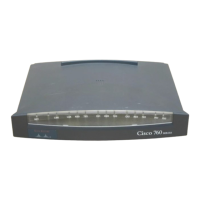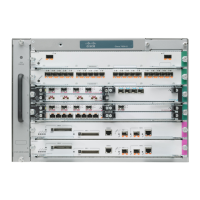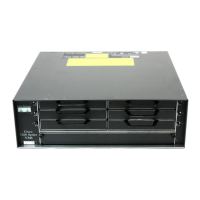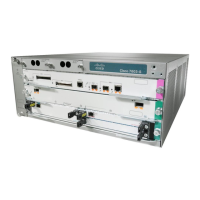Maintenance 5-15
Installing and Configuring Processor Modules
the RP.) The system uses the default filename for netbooting. However, if the configuration file
contains any boot instructions, the system uses those boot instructions instead of the filename it
computed from the jumper settings.
Table 5-1 Default Boot Filenames—Boot Field Jumpers
Note The four bits after the boot field (bits 4 through 7) in the configuration register are not used
and must be left cleared (0).
Bit 8 in the configuration register controls the console Break key. Setting bit 8 to 1 (the factory
default) causes the processor to ignore the console Break key. Clearing bit 8 to 0 causes the processor
to interpret Break as a command to force the system into the bootstrap monitor, thereby suspending
normal operation.
Bit 9 in the configuration register is not used.
Bit 10 in the configuration register controls the host portion of the Internet broadcast address. Setting
bit 10 causes the processor to use all zeros; clearing bit 10 (the factory default) causes the processor
to use all ones. Bit 10 interacts with bit 14, which controls the network and subnet portions of the
broadcast address. Table 5-2 shows the combined effect of bits 10 and 14.
Table 5-2 Configuration Register Settings for Broadcast Address Destination
Action/Filename Bit 3 Bit 2 Bit 1 Bit 0
bootstrap mode0000
ROM software0001
cisco2-rp1 0010
cisco3-rp1 0011
cisco4-rp1 0100
cisco5-rp1 0101
cisco6-rp1 0110
cisco7-rp1 0111
cisco10-rp1 1000
cisco11-rp1 1001
cisco12-rp1 1010
cisco13-rp1 1011
cisco14-rp1 1100
cisco15-rp1 1101
cisco16-rp1 1110
cisco17-rp1 1111
Bit 14 Bit 10 Address (<net><host>)
out out <ones><ones>
out in <zeros><zeros>

